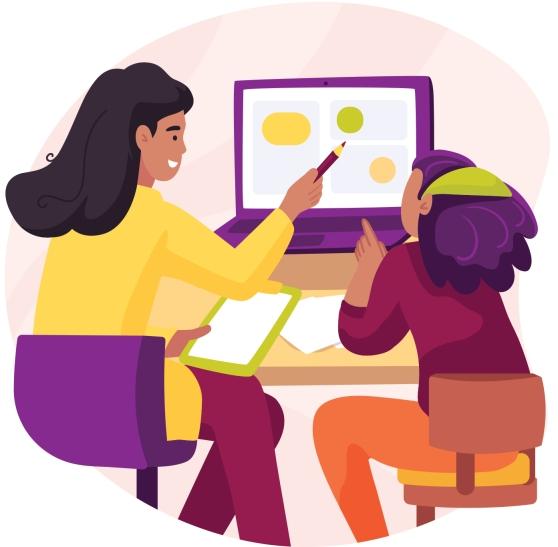
Assistive technology can be a game changer for special needs students. When we adapt technology to meet a student’s individual learning needs, it can boost student achievement and self-confidence and enable greater independence.
Your school may subscribe to a particular assistive technology software program or have devices already in use. The following resources can supplement any assistive technology you may already use in your classroom:
Immersive Reader. This free Microsoft product was designed for students with dyslexia, but can be beneficial for anyone experiencing difficulty with text decoding, focus, visual or sensory processing and other comprehension-related learning differences. Features include text-to-speech, word and syllable highlighting, line focus, translation and a built-in picture dictionary. Immersive Reader is already integrated into programs like Microsoft Word, Outlook and OneNote, but it can also be used with web materials by adding it to your internet browser.
Described and Captioned Media Program. This program has forged partnerships with top content creators and distributors to make thousands of educational videos accessible and available to students with visual and hearing impairments. Any educator with at least one student with a disability can sign up for a free membership. All content on the website displays high-quality text captions and audio descriptions. There’s also a feature in which an American Sign Language (ASL) interpreter appears in a window alongside the main content. Educators can select portions of these videos to create custom clips and take online courses on teaching students with special needs.
Mote. This Google Chrome extension, which is free at the basic level, can be used to add audio or record voice comments and embed them directly into documents, classroom assignments and Google tools like Classroom, Slides and Docs. It’s an excellent tool to accommodate students who are visually impaired, have dysgraphia or speech difficulties or have a fine motor disability that makes typing or writing difficult. A teacher can record comments for a class or students can respond verbally to assignments and teacher prompts. Voice comments can be transcribed automatically and translated into more than 20 languages.
Popplet. This free graphic organizer is helpful for students who struggle with focus, executive functioning, attention or time management. Popplet, which is easy to learn, allows students to visually organize facts or ideas and make connections. Students aren’t limited to using words to express their thoughts; they can also add images, drawings or videos to their “mind maps.” Popplet can help students who get overwhelmed by multitiered projects, such as presentations or essays, by breaking these assignments down into easier-to-manage steps.
To integrate assistive technology most effectively, pair it with classroom instruction that directly addresses student skill deficits so its use yields the most noticeable results.
Assistive technology can be beneficial for all students. Research has shown that tools like captioning can improve learning outcomes across the board. Whether they have disabilities or not, students enjoy engaging, multimodal assignments. And when educators normalize using assistive technology tools in their classrooms, special needs students feel truly included.
Sandy Scragg is an instructional technology specialist with more than 15 years of experience in New York City public schools.